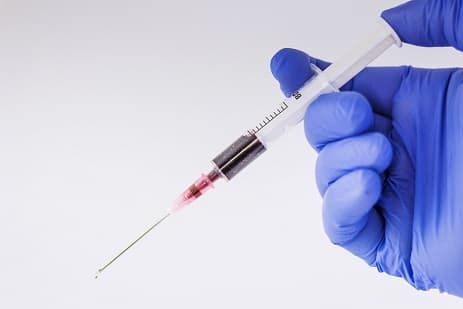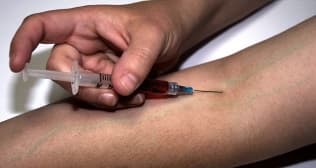
CFR Medical Waste Disposal Definitions
Definitions relating to Used Needle Disposal are helpful in understanding numerous regulations which apply.
BLOOD means human blood, human blood components and product made from human flood components, and products made from human blood.
BLOODBORNE PATHOGENS menas pathogenic microorganisms that are present in human blood and can cause disease in humans. These pathogens include, but not limited to, hepatitis B virus (HBV) and human immuno-deficiency virus (HIV).
CONTAMINATED means the presence or the reasonably anticipated presence of blood or other potentially infectious materials on an item or surfact.
CONTAMINATED SHARPS means any contaminated object that can penetrate the skin including, but not limited to, needles, scalpels, broken glass, broken capillary tups, and exposed ends of dental wires.

DECONTAMINATION means the use of physical or chemical means to remove, inactive or destroy bloodborne pathogens on a surface or item to the point where they are no longer capable of transmitting infectious particles and the surface or item is rendered safe for handling, use, or disposal.
EXPOSURE INCIDENT means a specific eye, moulth, other mucous membrane, non-intact skin, or parenteral contact with blood or other potentially infectious materials that results from the performance of an employee's duties.
HIV means hepatitis B virus.
HIV means human immunodeficiency virus.
OCCUPATIONAL EXPOSURE means reasonably anticipated skin, eye, mucous membrane, or parenteral contact with blood or other potentially infectious materials that may result from the performance of an employee's duties.

OTHER POTENTIALLY INFECTIOUS MATERIALS (OPIM) means: (1) The following human body fluids: semen, vaginal secretions, cerebro-spinal fluid, synovial fluid, pleural fluid, pericardial fluid, peritoneal fluid, amniotic fluid, saliva in dental procedures, any body fluid that is visibly contaminated with blood, and all body fluids in situations where it is difficult or impossible to differentiate between body fluids; (2) Any unfixed tissue or organ (other than intact skin) from a human (living or dead); and (3) HIV- containing cell or tissue cultures, organ cultures, and HIV or HBV- containing culture-medium or other solutions; and blood, organs or other tissues from experimental animals infected with HIV or HBV.
PERSONAL PROTECTIVE EQUIPMENT is specialized clothing or equipment worn by an employee for protection against hazard. General work clothes (e.g., uniforms, pants, shirts or blouses) not intended to function as protection against a hazard are not considered to be personal protective equipment.
REGULATED WASTE menas liquid or semi-liquid blood or other potentially infectious materials; contaminated items that would release blood or other potentially infectious materials in a liquid or semi-liquid state if compressed; items that are caked with dried blood or other potentially infectious materials and are capable of releasing these materials during handling; contaminated sharps; and pathological and microbiological wastes containeding blood or other potentially infectious materials.
UNIVERSAL PRECAUTIONS is an approach to infection control. Acoording the the concept of Universal Precautions (Standare Precautions), all human blood and certain human body fluids are treated as if known to be infectious for HIV, HBV, and other bloodborne pathogens.